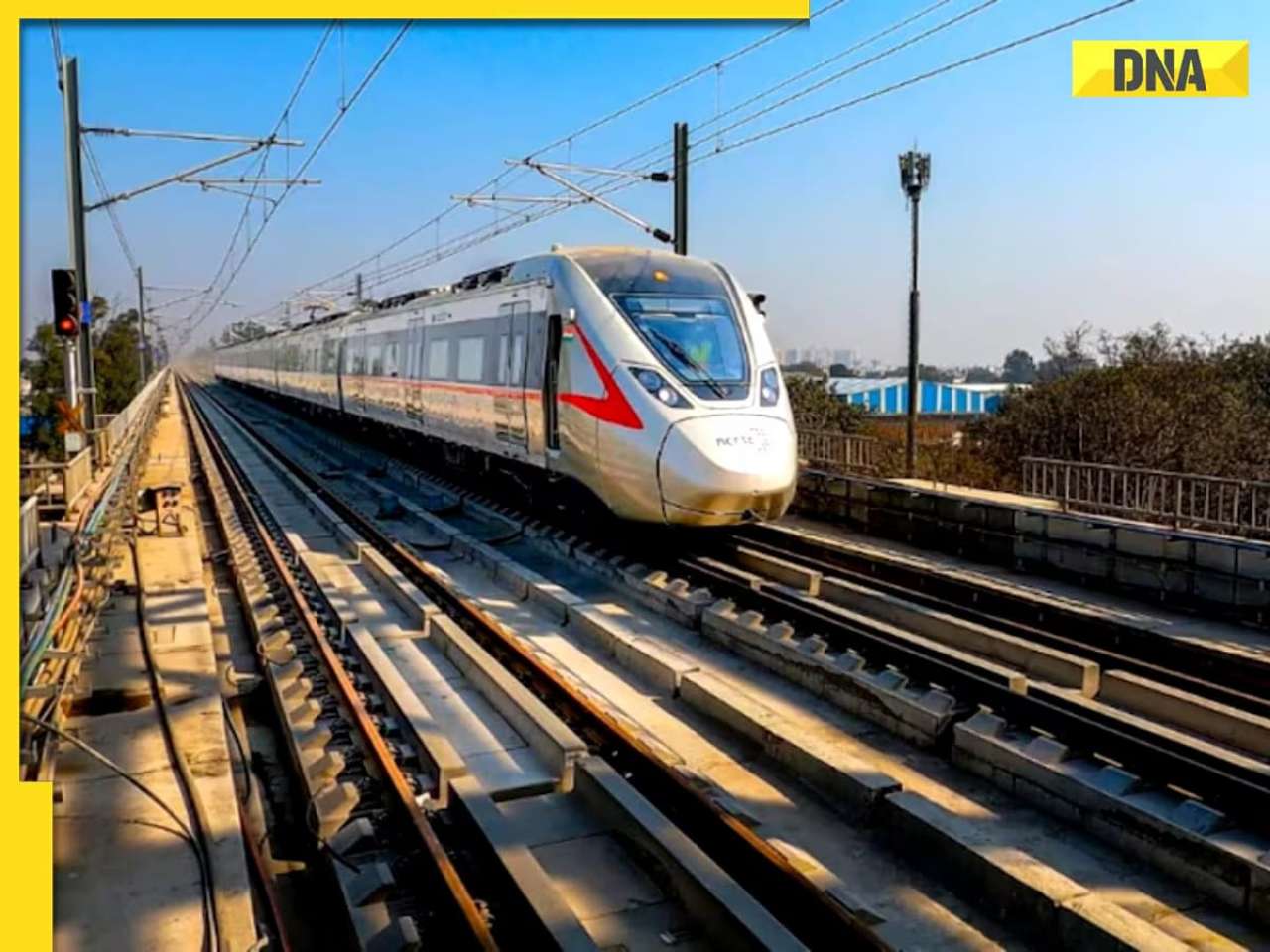Uncertainty hangs over the utilisation of about 2,177 hectares or approximately 5,000 acres of salt pan land for domestic, social housing and commercial purposes in Mumbai.
Uncertainty hangs over the utilisation of about 2,177 hectares or approximately 5,000 acres of salt pan land for domestic, social housing and commercial purposes in Mumbai.
Following its assurance to the Parliament that it will work out a feasible plan for the appropriation of salt pan land spread across 13 segments from Dahisar to Ghatkopar in 2003, the Union government has since tried to back out. But the parliamentary panel, headed by Maneka Gandhi, has refused to accept its plea.
“The committee noted that no decision has been taken by the government so far regarding utilisation and development of salt pan lands owned by the government. The committee, therefore, desired that the matter be expedited and brought to its logical conclusion,” the multi-member panel said on Tuesday. Salt pan pools, besides their obvious use in obtaining salt, also help stem high tide waves.
On June 9, 2001, the Centre approved a proposal to transfer 5,378 acres of surplus land in Maharashtra on ‘as is where is’ basis for sharing between the Union urban development ministry and the state.
Even as the state and the Centre were locked in a dialogue over sharing of the precious land, the Centre’s group of ministers (GoM), on April 23, 2007, found to its surprise that the state government had ‘changed’ the entries in revenue records to its benefit.
The ownership of 3,516 acres of land listed under ‘mithagar’ (salt work), vested with the Government of India, was changed to ‘Government of Maharashtra’ in the records.
However, since both governments belonged to the same ruling party, the Union government ‘requested’ its ally state to ‘restore the original entry’ in favour of the salt commissioner, Government of India.
The division of salt pan land is as follows: Dahisar (175 hectares), Malvani (18 ha), Pahadi (40 ha), Mulund (456 ha) Nahur (86 ha), Bhandup (220 ha), Kanjur Marg (598 ha), Wadala (164 ha), Anik (54 ha), Turbhe (148 ha), Mandale (105 ha), Chembur (57 ha) and Ghatkopar (56 ha).
Both the Centre and state government are conscious of the fact that this huge land spread in different segments has been under the developers’ and realtors’ scanner.
The state has tried to persuade the Centre that the slums on the lands owned by the Centre, like the ones abutting the Mumbai airport (80,000 hutments), Bombay Port Trust (15,000 hutments) and the Railways be rehabilitated on its share of saltpans. Similarly, the slum dwellers on state and BMC-owned land would be settled on salt pans under the state-owned portions.
Although the Union government maintains it is concerned with a fast speed solution to the salt pan lands, it hasn’t been able to justify that the bureaucratic actions have aimed at it anywhere.
A GoM was set up in May 2001, during the NDA rule, to examine issues relating to utilisation of the surplus salt lands but it failed to take a decision.
Numerous committees have been set up but to examine the salt pans land issue, but none have been able to reach a concrete resolution.
Considering the complexities and issues involved, it is not possible to visualise a precise time frame by which a final decision on the matter may emerge, the government said while seeking dropping of its assurance that salt pan land would be utilised soon.
![submenu-img]() 'What was that?': Aparshakti Khurana got angry phone call from Amar Kaushik for 'PR game' remark on Stree 2 credit war
'What was that?': Aparshakti Khurana got angry phone call from Amar Kaushik for 'PR game' remark on Stree 2 credit war![submenu-img]() Afghanistan vs New Zealand, One-off Test: Date, time, venue, live streaming, tickets - All you need to know
Afghanistan vs New Zealand, One-off Test: Date, time, venue, live streaming, tickets - All you need to know![submenu-img]() This college turned down Gautam Adani’s application, after 46 years called to honour him
This college turned down Gautam Adani’s application, after 46 years called to honour him![submenu-img]() Is Flipkart Minutes the new Santa? Bengaluru man gets free PS5 with TV order
Is Flipkart Minutes the new Santa? Bengaluru man gets free PS5 with TV order![submenu-img]() Deepika Padukone, Ranveer Singh visit Mumbai hospital with families; spark speculations about baby's birth
Deepika Padukone, Ranveer Singh visit Mumbai hospital with families; spark speculations about baby's birth![submenu-img]() Kolkata Rape Murder Case में फांसी की उठ रही मांग, ऐसे में सिलीगुड़ी कोर्ट का बड़ा फैसला, रेप के आरोपी को दी ये सजा
Kolkata Rape Murder Case में फांसी की उठ रही मांग, ऐसे में सिलीगुड़ी कोर्ट का बड़ा फैसला, रेप के आरोपी को दी ये सजा![submenu-img]() Haryana Assembly Elections 2024: कांग्रेस के साथ पर AAP में रार? विधायक बोले- बेमेल गठबंधन, राहुल-प्रियंका पर उठाए सवाल
Haryana Assembly Elections 2024: कांग्रेस के साथ पर AAP में रार? विधायक बोले- बेमेल गठबंधन, राहुल-प्रियंका पर उठाए सवाल![submenu-img]() Hyderabad Airport पर गिरफ्तार हुआ ये एक्टर, CISF ने नशे की हालत में ये काम करते हुए दबोचा
Hyderabad Airport पर गिरफ्तार हुआ ये एक्टर, CISF ने नशे की हालत में ये काम करते हुए दबोचा![submenu-img]() Bangladesh में भारत विरोधी गुट अब राष्ट्रगान के खिलाफ, 'भारतीय' बताकर उठाई बदलने की मांग; सरकार ने दिया ये जवाब
Bangladesh में भारत विरोधी गुट अब राष्ट्रगान के खिलाफ, 'भारतीय' बताकर उठाई बदलने की मांग; सरकार ने दिया ये जवाब![submenu-img]() 'NRC नहीं तो आधार कार्ड नहीं', असम में 'ऑपरेशन घुसपैठिया' के बीच Himanta Biswa Sarma ने तय किया नियम, जानें क्या है पूरी बात
'NRC नहीं तो आधार कार्ड नहीं', असम में 'ऑपरेशन घुसपैठिया' के बीच Himanta Biswa Sarma ने तय किया नियम, जानें क्या है पूरी बात![submenu-img]() Skoda-Auto Volkswagen India to invest Rs 15000 crore to set up EV plant in…
Skoda-Auto Volkswagen India to invest Rs 15000 crore to set up EV plant in…![submenu-img]() Hyundai Venue E+ with electric sunroof launched in India; price starts at Rs…
Hyundai Venue E+ with electric sunroof launched in India; price starts at Rs…![submenu-img]() DNA Auto Awards 2024: Maruti Suzuki Swift nominated for ‘CAR OF THE YEAR’; check price, features
DNA Auto Awards 2024: Maruti Suzuki Swift nominated for ‘CAR OF THE YEAR’; check price, features![submenu-img]() DNA Auto Awards 2024: Hyundai Alcazar Facelift nominated for ‘CAR OF THE YEAR’; check details
DNA Auto Awards 2024: Hyundai Alcazar Facelift nominated for ‘CAR OF THE YEAR’; check details![submenu-img]() Hyundai Creta Knight Edition launched in India: Check price, features, design
Hyundai Creta Knight Edition launched in India: Check price, features, design![submenu-img]() Meet IIT topper who left corporate job to become IAS officer, failed four times in UPSC exam, he is...
Meet IIT topper who left corporate job to become IAS officer, failed four times in UPSC exam, he is...![submenu-img]() BIG UPDATE! UGC NET answer key 2024 to be released soon at...
BIG UPDATE! UGC NET answer key 2024 to be released soon at...![submenu-img]() Meet woman, mill worker’s daughter who lost mother during UPSC preparations, still cracked it with AIR 14, she is now...
Meet woman, mill worker’s daughter who lost mother during UPSC preparations, still cracked it with AIR 14, she is now...![submenu-img]() Meet man, 54-year-old engineer who left his high-paying job to crack NEET exam but there's a twist
Meet man, 54-year-old engineer who left his high-paying job to crack NEET exam but there's a twist![submenu-img]() Meet IIT-JEE topper with AIR 1, who quit IIT Bombay after a year due to...
Meet IIT-JEE topper with AIR 1, who quit IIT Bombay after a year due to...![submenu-img]() Mumbai: Fire Breaks Out At Times Tower In Mumbai, 9 Fire Units Deployed
Mumbai: Fire Breaks Out At Times Tower In Mumbai, 9 Fire Units Deployed![submenu-img]() 'Dharavi Project Is About Restoring Dignity...', Says Gautam Adani | Dharavi Redevelopment Project
'Dharavi Project Is About Restoring Dignity...', Says Gautam Adani | Dharavi Redevelopment Project![submenu-img]() Kolkata Doctor Case: CBI Visits RG Kar, Seizes Documents On Funds Used During Sandip Ghosh’s Tenure
Kolkata Doctor Case: CBI Visits RG Kar, Seizes Documents On Funds Used During Sandip Ghosh’s Tenure![submenu-img]() Giriraj Singh Attacked: Union Minister Giriraj Singh Assaulted In Begusarai, Bihar; Accused Arrested
Giriraj Singh Attacked: Union Minister Giriraj Singh Assaulted In Begusarai, Bihar; Accused Arrested![submenu-img]() Haryana Assembly Election 2024: Haryana Assembly Election Date Changed, Check Details Here
Haryana Assembly Election 2024: Haryana Assembly Election Date Changed, Check Details Here![submenu-img]() This college turned down Gautam Adani’s application, after 46 years called to honour him
This college turned down Gautam Adani’s application, after 46 years called to honour him![submenu-img]() Business heartthrob Vaibhav Maloo pursues his childhood dreams in the digital world by launching InfoProfile
Business heartthrob Vaibhav Maloo pursues his childhood dreams in the digital world by launching InfoProfile ![submenu-img]() Skoda-Auto Volkswagen India to invest Rs 15000 crore to set up EV plant in…
Skoda-Auto Volkswagen India to invest Rs 15000 crore to set up EV plant in…![submenu-img]() This Mukesh Ambani Reliance share plummets 30% in weeks, investors caught in lower circuit trap
This Mukesh Ambani Reliance share plummets 30% in weeks, investors caught in lower circuit trap![submenu-img]() Hyundai Venue E+ with electric sunroof launched in India; price starts at Rs…
Hyundai Venue E+ with electric sunroof launched in India; price starts at Rs…![submenu-img]() Meet Yesha Sagar, Indian-Canadian model and actress making waves as cricket presenter
Meet Yesha Sagar, Indian-Canadian model and actress making waves as cricket presenter![submenu-img]() Meet actress who never got lead roles, still turned superstar, one rumour ruined her career, became second wife of...
Meet actress who never got lead roles, still turned superstar, one rumour ruined her career, became second wife of...![submenu-img]() Sundar Pichai to Mark Zuckerberg: 10 tech leaders from Time's 2024 AI 100 list
Sundar Pichai to Mark Zuckerberg: 10 tech leaders from Time's 2024 AI 100 list![submenu-img]() Meet actress worth Rs 10000 cr, among youngest billionaires ever, once had no money for gas, now richer than SRK, Salman
Meet actress worth Rs 10000 cr, among youngest billionaires ever, once had no money for gas, now richer than SRK, Salman![submenu-img]() Top six signs of high cholesterol on face that you must not ignore
Top six signs of high cholesterol on face that you must not ignore ![submenu-img]() Is Flipkart Minutes the new Santa? Bengaluru man gets free PS5 with TV order
Is Flipkart Minutes the new Santa? Bengaluru man gets free PS5 with TV order![submenu-img]() CM Himanta Biswa Sarma sets this condition for new Aadhaar card applicants in Assam
CM Himanta Biswa Sarma sets this condition for new Aadhaar card applicants in Assam![submenu-img]() Government discharges Ex-IAS Trainee Puja Khedkar over examination fraud with immediate effect
Government discharges Ex-IAS Trainee Puja Khedkar over examination fraud with immediate effect ![submenu-img]() Kolkata doctor rape-murder case: DNA report suggests Sanjay Roy lone accused, CBI to file chargesheet
Kolkata doctor rape-murder case: DNA report suggests Sanjay Roy lone accused, CBI to file chargesheet![submenu-img]() This city is all set to get India's fastest metro train service; check route, timeline, distance, top speed and more
This city is all set to get India's fastest metro train service; check route, timeline, distance, top speed and more











































)
)
)
)
)
)
)
)
)
)
)
)
)
)





)
)
)
)
)
)